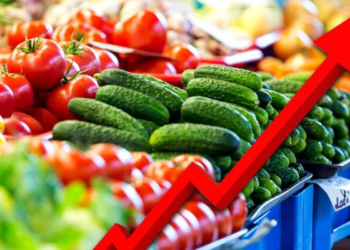The Consumer Prices Index, including owner occupiers’ housing costs (CPIH), experienced a notable increase of 6.4% in the 12 months leading up to July 2023, reflecting a decrease from June’s 7.3% and a substantial drop from the peak of 9.6% in October 2022. Notably, our predictive model suggests that October 2022 marked the highest inflation rate in over four decades, a milestone since the CPIH National Statistic series inception in January 2006. Meanwhile, the July 2023 rate is the lowest recorded since March 2022.
The easing of the annual rate from June to July 2023 can be attributed to a 0.3% decrease in prices during the month, compared to a 0.6% rise observed a year earlier.
Similarly, the Consumer Prices Index (CPI) showed a 6.8% increase in the 12 months leading up to July 2023, marking a decline from June’s 7.9% and a drop from the peak of 11.1% seen in October 2022. Our modeled data indicates that the October 2022 peak represented the highest annual inflation rate since 1981, with the CPI National Statistic series commencing in January 1997. The July 2023 rate signifies the lowest point since February 2022.
The moderation in the CPI annual rate between June and July 2023 was the result of a 0.4% drop in prices during the month, compared to a 0.6% rise observed in the same period the previous year.
The drivers of the annual inflation rate for both CPIH and CPI remain consistent where the measures overlap. However, the owner occupiers’ housing costs (OOH) component, accounting for 16% of the CPIH, remains the key differentiator between CPIH and CPI inflation rates. This underlines the role of housing and household services.
Effect of Immigration on UK Inflation:
The economic and demographic effects of immigration have added complexity to the inflation dynamics in the UK. Changes in population structure and consumption patterns brought about by immigration can influence demand dynamics, potentially contributing to inflationary pressures. While specific attribution is challenging due to the myriad factors at play, monitoring the influence of immigration on consumption behavior remains crucial in understanding the inflation outburst.
The annual inflation rate for housing, water, electricity, gas, and other fuels within the Consumer Prices Index including owner occupiers’ housing costs (CPIH) reported a 5.4% figure in July 2023. This reflects a decline from the peak of 11.8% in January and February 2023, and the 7.3% recorded in June 2023. The Consumer Prices Index (CPI) for the same category experienced a 6.8% annual inflation rate in July 2023, down from the 26.7% peak in January 2023 and the 12.0% in June 2023. This reduction is primarily attributed to the lowering of the Office of Gas and Electricity Markets (Ofgem) price cap in July 2023.
The change was mainly propelled by the gas sector, with prices dropping by 25.2% between June and July 2023, in contrast to the 0.1% increase observed in the same period the previous year. This gas price plunge, the most substantial since the series began in 1988, contributed a 0.44 percentage point decrease to the monthly change in the CPIH annual rate. Electricity also played a significant role, with prices declining by 8.6% between June and July 2023, as opposed to a 0.4% increase in the same period the previous year. This contributed a 0.20 percentage point decrease to the monthly change in the CPIH annual rate.
Balancing this decline were other categories contributing positively to the monthly change in the CPIH annual rate. Actual rentals for housing witnessed a 1.7% rise between June and July 2023, compared to a 0.8% increase during the same period the previous year. This contributed a 0.06 percentage point increase to the monthly change in the CPIH annual rate, primarily driven by registered social landlord rents. Imputed rents increased by 0.4% between June and July 2023, up from 0.3% between the same months in the prior year, providing a 0.02 percentage point increase to the monthly change in the CPIH annual rate.
Furthermore, the prices of food and non-alcoholic beverages exhibited a 0.1% increase between June and July 2023, compared to a 2.3% rise during the same period the previous year. This moderation resulted in an annual rate of 14.9% in July 2023, marking the slowest rate of growth since September 2022. This decline is noted from 17.4% in June 2023 and a recent high of 19.2% in March 2023, representing the highest annual rate seen in over 45 years. As immigration patterns impact consumption behavior and overall demand, it remains a significant variable in the inflation landscape.











